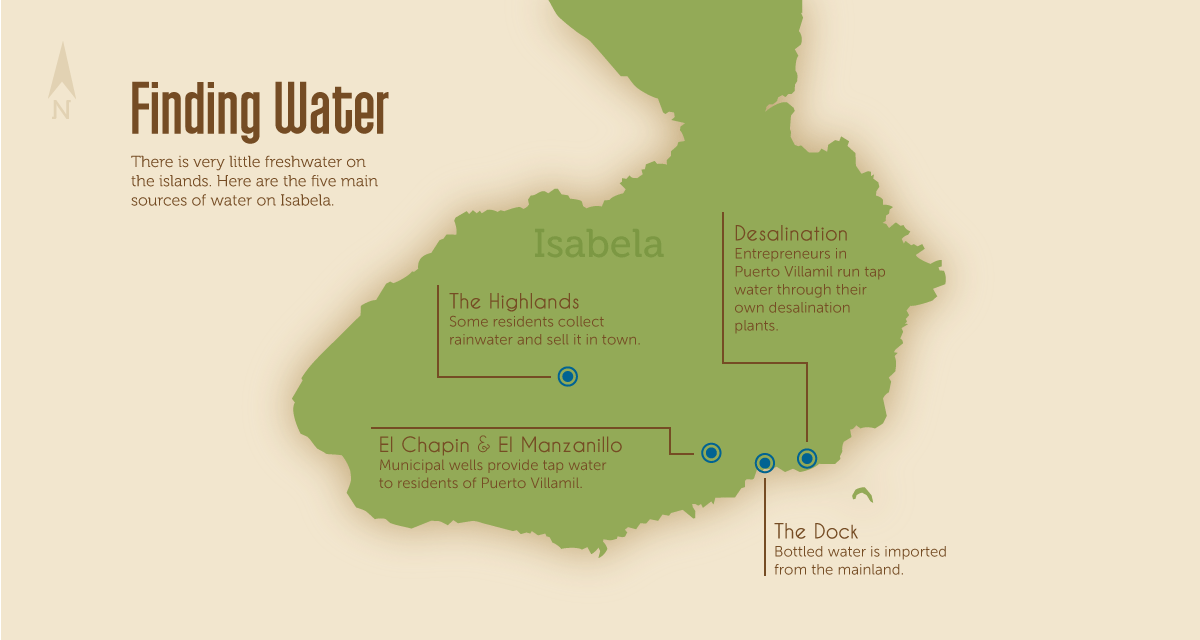


An open trash dump and the lack of an adequate sewage system have contaminated the island’s limited fresh water sources. Municipal water is pumped from brackish aquifers and passes untreated to taps in the town. Her daughter’s chronic skin infections forced Mayra Romero Rivas to buy rainwater collected in the highlands so her family would have clean water to bathe. “The vital thing that we need is water, and we don’t have it,” said Romero Rivas, who owns and operates a restaurant in Puerto Villamil. She cooks with city tap water and worries about the effects it will have on her customers. Seventy percent of illnesses on Isabela may be caused by contaminated water, according to a 2010 study conducted by the University of North Carolina at Chapel Hill and the Universidad San Francisco de Quito.
Bert Hauser, another resident of Isabela, collects and filters rainwater from the roofs of his farm in the highlands. He drives around town and sells the water from a tank in the back of his truck. “I think authorities, they should act,” Hauser said. “It will not be an easy job, but it is possible.” In 2012, the municipal government invested more than 500 million dollars in construction of a sewage system for Puerto Villamil. Authorities also implemented a waste management program, and constructed a new recycling facility. Providing clean water to residents will require the cooperation of government and residents to address contamination, limit use of fresh water, construct a filtration plant and replace the contaminated waterlines in the town.
The vital thing that we need is water, and we don’t have it.
– Mayra Romero Rivas